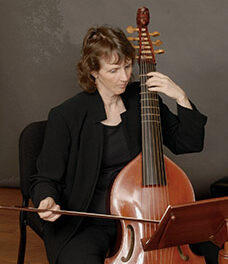He doesn’t sport the big poufed hair of many big-name conductors, and his manner doesn’t radiate the avuncular geniality that would undoubtedly endear him to young students. Nor is the meticulously self-contained Matthias Bamert particularly intimidating from what I can tell. Yet each time I’ve seen him conduct the Brevard Sinfonia, the students play with a zeal that must surely be inspired by reverence, adoration, or sheer terror. So it was once again at Whittington-Pfohl Auditorium on the fourth Saturday of the 2011 Brevard Music Festival when Bamert and the Sinfonia delivered a program that took us from Brahms to Haydn and back; with a memorable twist. Jumping aboard as guest soloist for Haydn’s Cello Concerto No. 2 was Felix Wang.
The evening began somewhat inauspiciously with Brahms’ “Tragic Overture.” Crisp, almost harsh in the opening bars, the strings were interestingly blended, punctuated with spiky thrusts. Softer passages were not always hushed or delicate enough, but the portentous episodes came through quite nicely. A good oboe solo was followed by even better work from the French horn, but whatever the indefinable X-factor was that Bamert brought to the podium, it did not cure the shakiness of the trumpets near the end, though the overall effect was satisfying.
As we moved closer to the heart of Bamert’s reputation, namely Mozart and his contemporaries, Sinfonia’s mastery of dynamic contrasts – and the focus of the ensemble – sharpened noticeably. Wang contributed some contrasts of his own after the orchestral intro, launching into the opening Allegro moderato of the Haydn. Up in the treble, the tone of his cello tended to be thin and scrappy, presumably a delight to authenticists; ah, but down below, the timbre was lusciously mellow. Virtuosity poured forth throughout the lively movement, especially in the double-bowing of the cadenza. Bamert and Wang kept the middle movement Adagio at what most musicians now call an andante pace, the strings contributing a lovely lilt at the outset, but the soloist still sweetened his sound markedly from the midrange up before coyly slowing the tempo at the close. A slightly abrasive quality returned to Wang’s playing as he frolicked through the closing Allegro at a jolly trot. Leavening the overall impression, the orchestra accompanied with sunny buoyancy.
The symphonic piece after intermission certainly wasn’t mainstream Brahms. Instead, it was the rarely heard Schoenberg arrangement of Brahms’ first piano quartet – with an orchestral palette that often sounded less like an 1861 composition than a modern work by Strauss, Sibelius, or Mahler. Conducting without a score, Bamert had on obvious affection for the piece, his advocacy most extroverted in the concluding Presto movement, which served to underscore the kinship of the theme with Brahms’ Hungarian Dances. One had to listen for the passion until then, but it was there in the ensemble work throughout most of the opening Allegro, urged forth by Bamert when he wanted power, meticulously shaped in the passages of utmost delicacy. Only in some of the more mundane soft episodes did the intensity seem to flag, and the ensuing Intermezzo was the tamest of the four movements, though a fine solo from the principal clarinetist introduced the theme.
In the penultimate Andante con moto, the most colorfully orchestrated in Schoenberg’s arrangement, Bamert was visibly more engaged. Lovely mid-tempo passages from the principal oboist were followed by a stately flowering of brass, far more effective here than they had been in the opening Allegro. It was here that the kinship with Sibelius struck me most forcefully, but the Sinfonia saved their best for the Presto finale. Responding to Bamert’s animation, the winds blended impressively as they established the movement’s gypsy essence, and the full ensemble executed the finely-judged tempo shifts with admirable precision. Readying for the concluding gallop, the first clarinet ushered us into an oasis of quiet where the first chairs of the string sections briefly formed an unaccompanied string quartet, a witty way for Schoenberg to reference the piece’s chamber music origins before the final orchestral roar.











